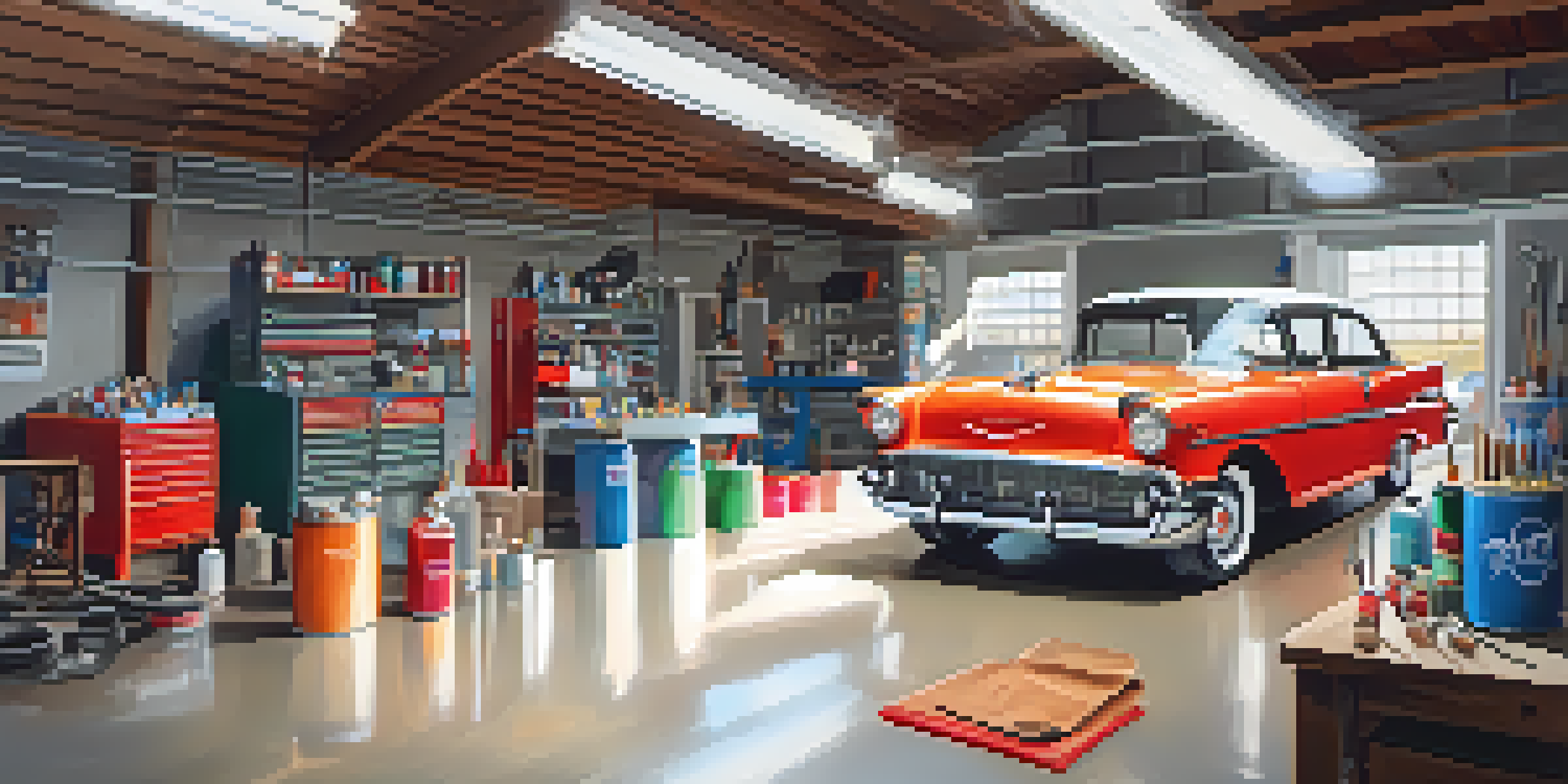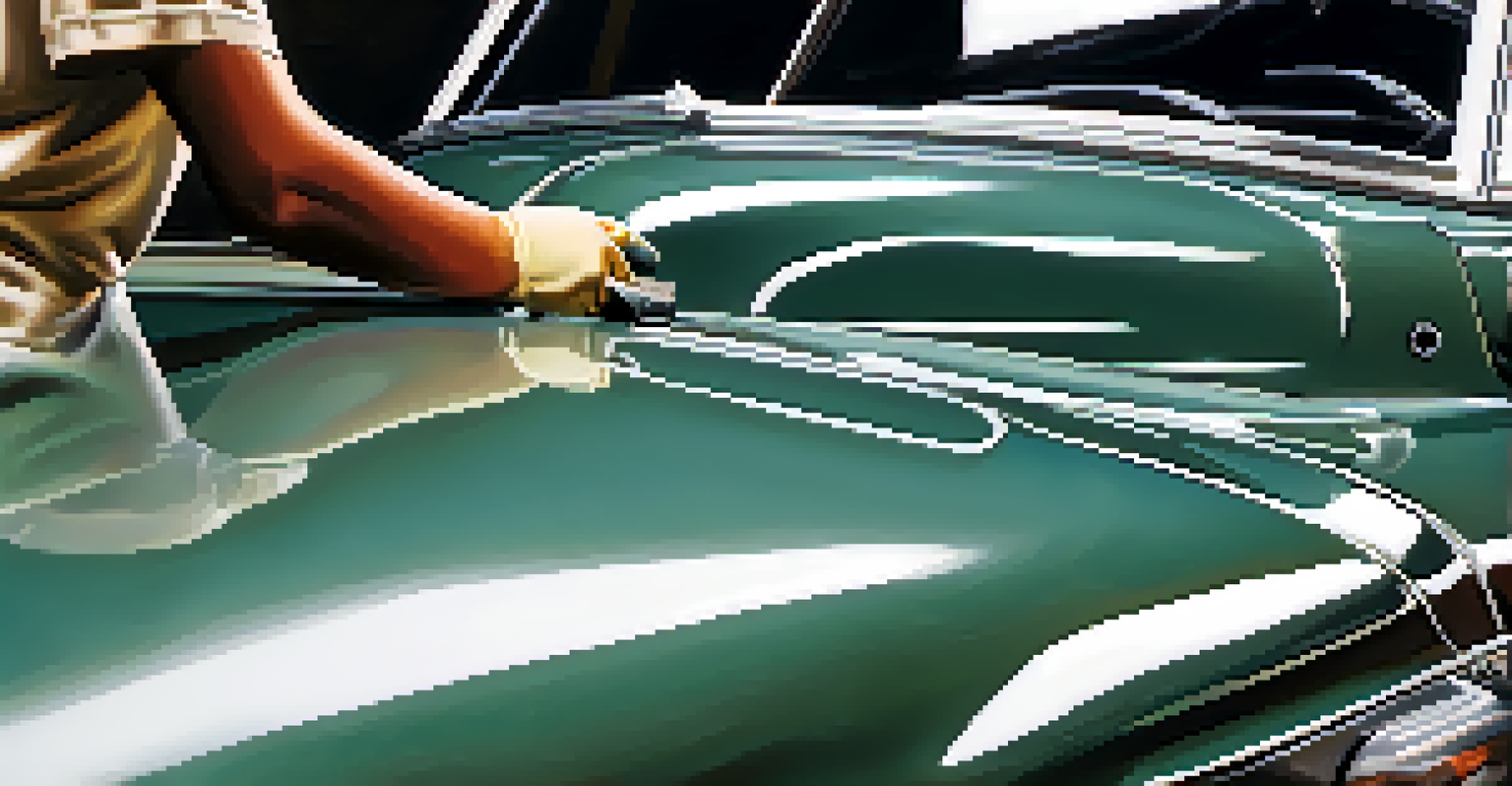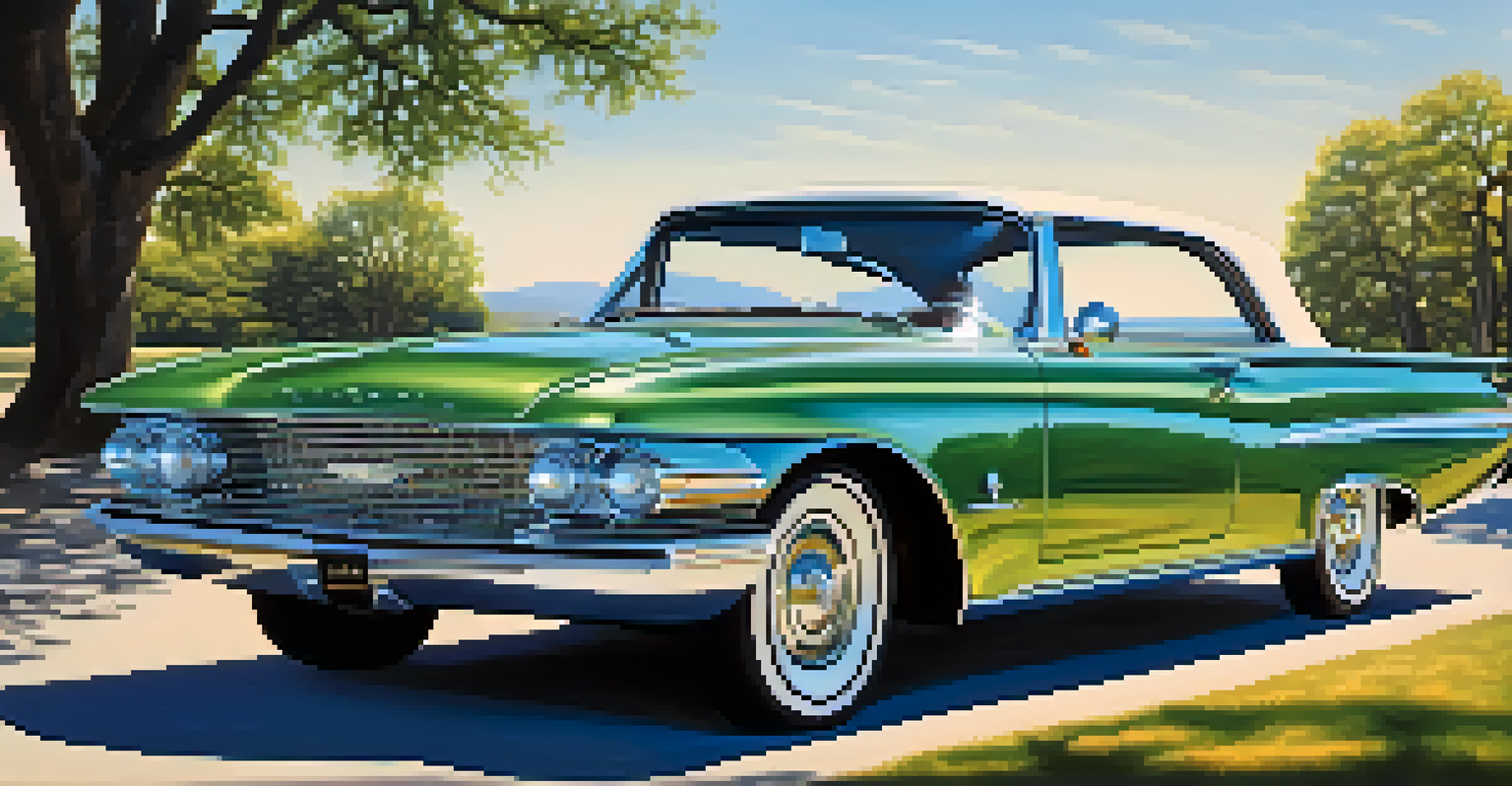Best Practices for Painting Your Restored Classic Car

Choose the Right Environment for Painting
Before you even open a can of paint, it's crucial to pick the right environment. A clean, well-ventilated space away from dust and debris ensures that your paint job remains pristine. Ideally, a dedicated garage or a spray booth can provide the controlled conditions needed for a smooth finish.
The details are not the details. They make the design.
Temperature and humidity play significant roles as well. Aim for a temperature between 65°F and 85°F, and keep humidity low to prevent moisture from ruining your paint. By controlling these factors, you set the stage for a successful painting process.
Lastly, consider using drop cloths or plastic sheeting to protect surrounding surfaces. Nothing is worse than accidentally splattering your freshly painted car with an unwanted color. A little preparation goes a long way in achieving that flawless finish!
Prep Your Classic Car Thoroughly
Preparation is the backbone of a successful paint job. Start by thoroughly cleaning your car to remove all dirt, grease, and old paint. A good wash followed by a clay bar treatment can help eliminate any contaminants that might affect adhesion.

Next, inspect your car’s surface for rust or dents. Addressing these issues with appropriate fillers or rust treatments will ensure a smooth surface for painting. Ignoring imperfections can lead to an uneven finish that detracts from your hard work.
Choose the Right Environment
Selecting a clean, well-ventilated space with controlled temperature and low humidity is essential for a successful paint job.
Finally, sanding the surface is essential. Use a combination of coarse and fine-grit sandpaper to create a rough surface for the new paint to adhere to. This step is crucial because it ensures that the paint bonds well, giving you a durable finish that lasts.
Select the Right Type of Paint
Choosing the right paint is like picking the perfect outfit for an occasion. For classic cars, you'll want to consider options like acrylic enamel, urethane, or even single-stage paints. Each type has its benefits and drawbacks, so understanding these can help you make an informed decision.
Quality means doing it right when no one is looking.
Acrylic enamel is known for its durability and ease of use, making it a popular choice among DIY enthusiasts. Urethane paints offer superior gloss and protection, but they require more skill to apply. Weigh your options based on your skill level and desired results.
Don't forget to consider the color and finish! Classic cars often shine in vibrant colors and finishes that reflect their era. Choosing the right shade can enhance the car's character and turn heads wherever you go.
Invest in Quality Tools and Materials
Using quality tools can make all the difference in your painting project. Invest in a good spray gun, as this will help you achieve an even coat. A high-quality gun can produce finer atomization and a smoother finish, which is essential for that showroom look.
Don't skimp on other materials either. Quality primers, paint, and clear coats contribute to a durable finish that withstands the test of time. Buying from reputable brands ensures that you're using products designed specifically for automotive applications.
Thorough Prep is Essential
Proper preparation, including cleaning, repairing imperfections, and sanding, sets the foundation for a flawless paint application.
Lastly, consider protective gear like masks and gloves. Safety should never take a backseat when working with chemicals. Protecting yourself ensures you can enjoy your classic car for many years to come.
Master the Art of Painting Technique
When it comes to painting, technique is key. Start with even strokes and maintain a consistent distance from the car’s surface, usually about 6-8 inches. This consistency helps prevent runs and ensures an even application.
It’s also vital to work in light layers. Applying multiple thin coats rather than one thick coat reduces the risk of drips and allows for better drying between layers. This method not only enhances the finish but also ensures that the paint adheres properly.
Lastly, don't rush the process. Allow each coat to dry completely before adding another. Patience in this stage can lead to a professional-looking finish that you'll be proud to show off.
Allow Proper Drying and Curing Time
After applying paint, it's tempting to rush into the next steps. However, allowing proper drying and curing time is crucial for achieving a durable finish. Follow the manufacturer's guidelines for drying time between coats and before handling the car.
Curing is a different beast; this is when the paint fully hardens and bonds. Depending on the type of paint used, curing can take several days. During this time, keep the car in a controlled environment to prevent dust or debris from settling on the paint.
Finishing Touches Matter
Polishing and waxing your car after painting enhances its appearance and protects the finish for years to come.
Remember, good things come to those who wait! The longer you allow the paint to cure, the more resilient your finish will be. You’ll thank yourself later when your car shines brightly on the road.
Finishing Touches: Polishing and Waxing
Once your paint job is complete and fully cured, it’s time for the finishing touches! Polishing your car can enhance the gloss and remove any imperfections that may have occurred during the painting process. A good polish can bring out the depth and richness of your paint color.
After polishing, consider applying a high-quality car wax. Waxing adds a protective layer that shields your paint from UV rays, dirt, and other environmental factors. This not only keeps your car looking fresh but also prolongs the life of your paint job.

Lastly, take a moment to admire your hard work! A freshly painted classic car is a testament to your dedication and skill. Enjoy the compliments that come your way, and remember to keep up with regular maintenance to preserve that gorgeous finish.